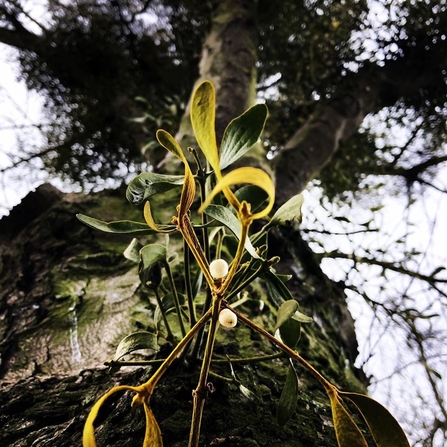Out of 900 species found worldwide, we have one just one species of Mistletoe in the UK, the European Mistletoe. It’s a hemiparasitic plant due to it taking water and nutrients from its host but also photosynthesising itself.
Mistletoe has in recent years spread and expanded its range in Eastern parts of the UK and it is thought largely due to an increase of Blackcaps coming over from Germany and spending Christmas with us. These migratory birds, like other birds such as Mistle Thrushes, feast on the plump berries wiping their beaks afterwards to rid them of the sticky mess on branches and spreading the plant’s seed. If these seeds are in the right spot on a branch then they may just germinate and grow. Blackcaps are thought to be the best dispersers of Mistletoe berries and arriving here in their thousands have helped decorate the trees more widely in this region!


